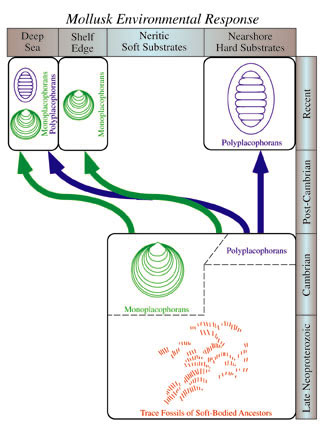

Figure 4. Environmental response of mollusks as part of Cambrian substrate revolution. Onshore-offshore diagram shows environmental distribu-tion of: (1) late Neoproterozoic–Cambrian grazing traces made in arcuate rows and attributed to early soft-bodied mollusks (nearshore hard substrate distribution is inferred); (2) Cambrian grazing monoplacophorans and polyplacophorans; and (3) modern monoplacophorans and polyplacophorans. Drawings of monoplacophoran and polyplacophoran are schematic and of specimens 1–3 cm in size; drawing of grazing trace modified from Seilacher (1997), each row is 2–5 cm across. Dashed lines in late Neoproterozoic–Cambrian box indicate restriction of body fossils to indicated Cambrian environments and occurrence of grazing traces throughout time and environments represented by box. Geological time not to scale, nearshore environments are above normal wave base and for the Cambrian include stromatolites; neritic environments range from nearshore to shelf edge.